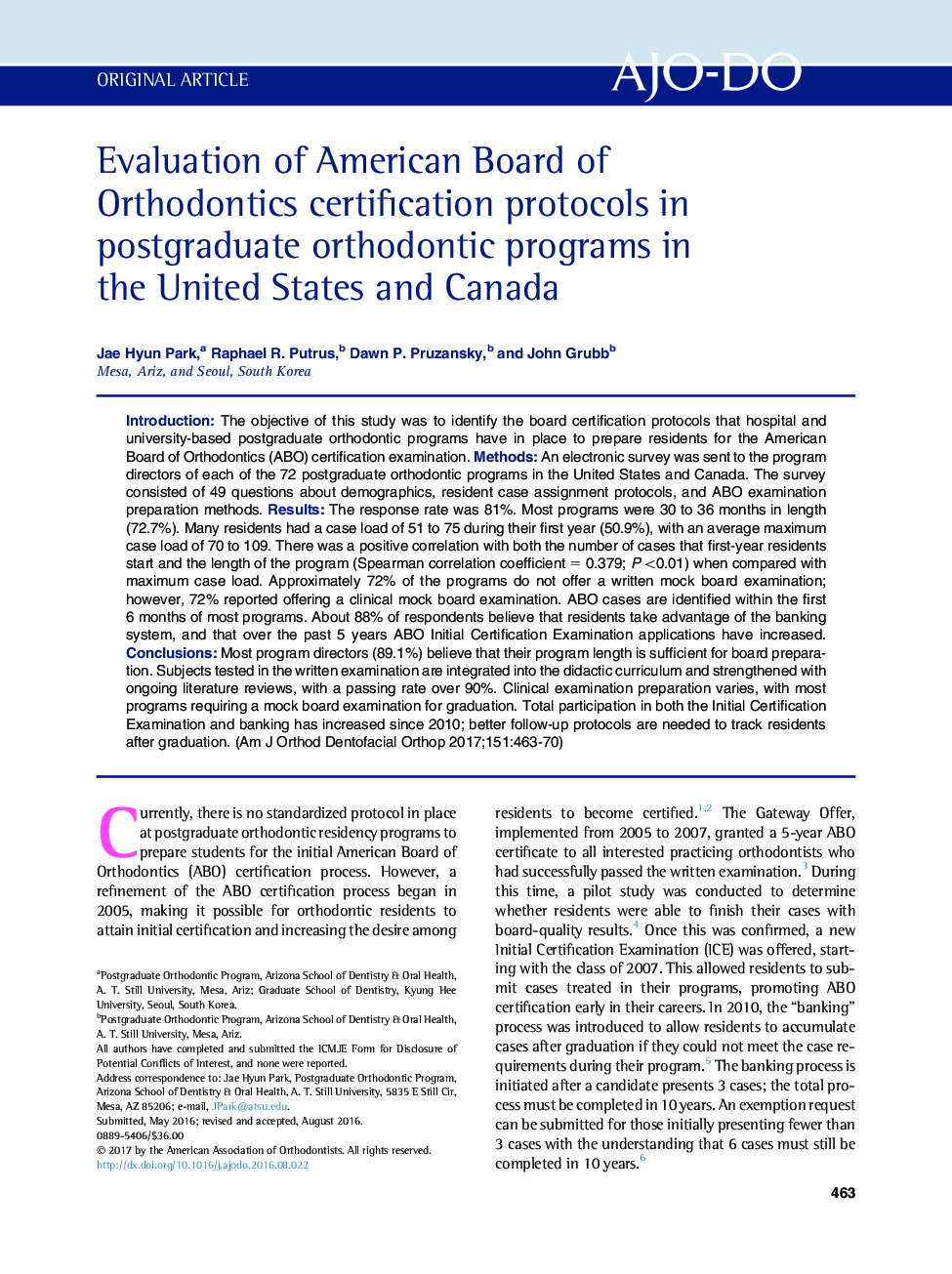| Article ID | Journal | Published Year | Pages | File Type |
|---|---|---|---|---|
| 5637714 | American Journal of Orthodontics and Dentofacial Orthopedics | 2017 | 8 Pages |
â¢Most program directors believe their program length is adequate for board preparation.â¢Clinical preparation varies, but most programs require a mock board examination.â¢Participation in Initial Certification Examination and banking have increased since 2010.â¢Better follow-up protocols are needed to track residents after graduation.
IntroductionThe objective of this study was to identify the board certification protocols that hospital and university-based postgraduate orthodontic programs have in place to prepare residents for the American Board of Orthodontics (ABO) certification examination.MethodsAn electronic survey was sent to the program directors of each of the 72 postgraduate orthodontic programs in the United States and Canada. The survey consisted of 49 questions about demographics, resident case assignment protocols, and ABO examination preparation methods.ResultsThe response rate was 81%. Most programs were 30 to 36 months in length (72.7%). Many residents had a case load of 51 to 75 during their first year (50.9%), with an average maximum case load of 70 to 109. There was a positive correlation with both the number of cases that first-year residents start and the length of the program (Spearman correlation coefficient = 0.379; P <0.01) when compared with maximum case load. Approximately 72% of the programs do not offer a written mock board examination; however, 72% reported offering a clinical mock board examination. ABO cases are identified within the first 6 months of most programs. About 88% of respondents believe that residents take advantage of the banking system, and that over the past 5 years ABO Initial Certification Examination applications have increased.ConclusionsMost program directors (89.1%) believe that their program length is sufficient for board preparation. Subjects tested in the written examination are integrated into the didactic curriculum and strengthened with ongoing literature reviews, with a passing rate over 90%. Clinical examination preparation varies, with most programs requiring a mock board examination for graduation. Total participation in both the Initial Certification Examination and banking has increased since 2010; better follow-up protocols are needed to track residents after graduation.
